Step One – Identify the target teeth.
The first image taken is of the upper incisors 101, 102 and 103. Highlighted on the dental chart and outlined in the picture below.
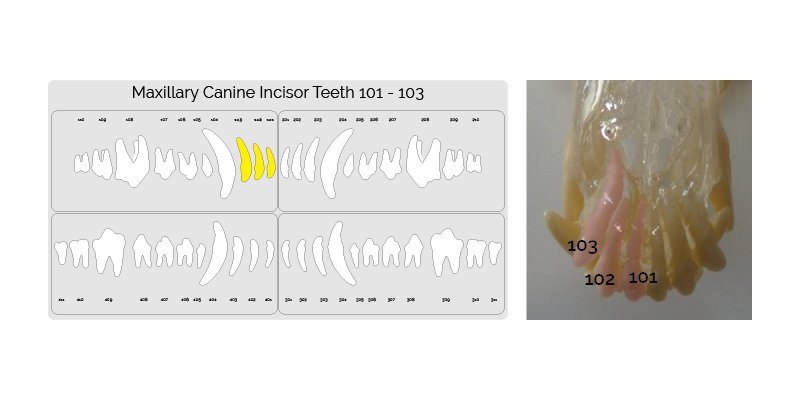
Step Two. Placing the sensor.
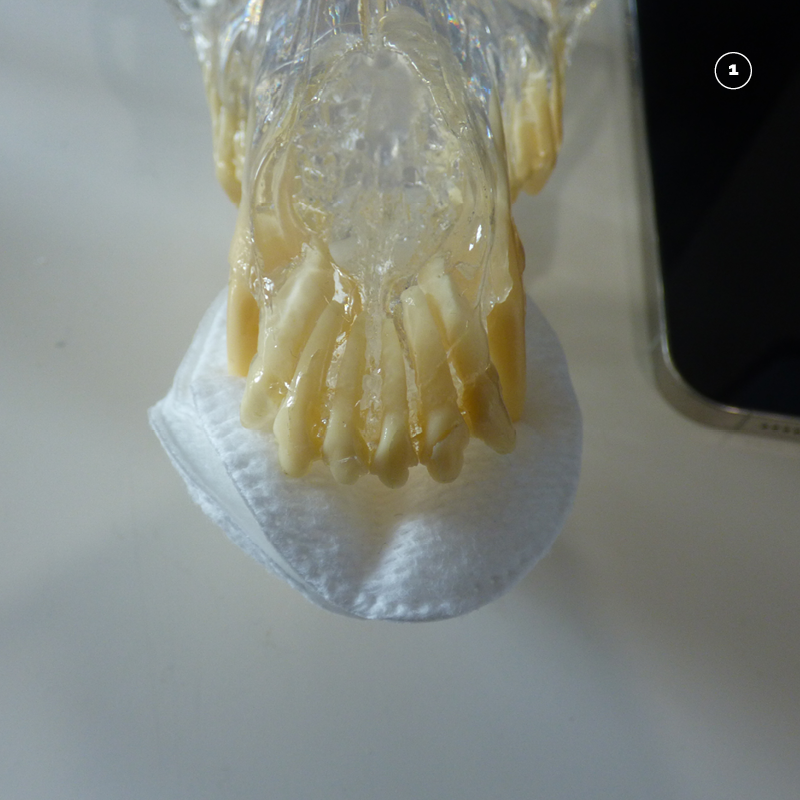
Make a cradle to hold the sensor in place by placing some swabs on the lower canine and incisor teeth.
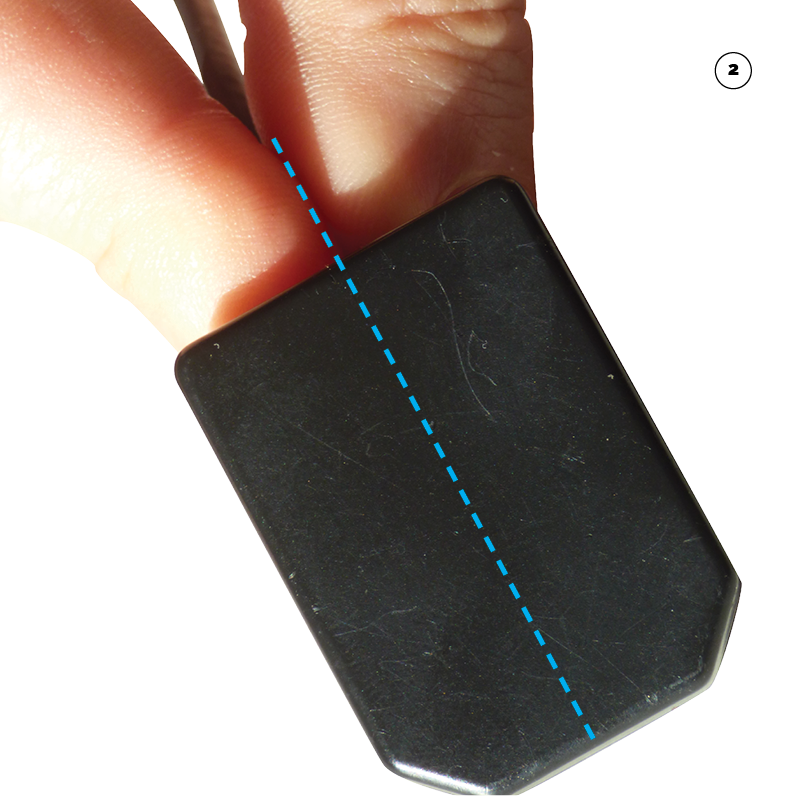
Holding the sensor with the forefinger and thumb place the sensor in the mouth.
Use the centre line as a guide to place the sensor central to the targeted teeth.
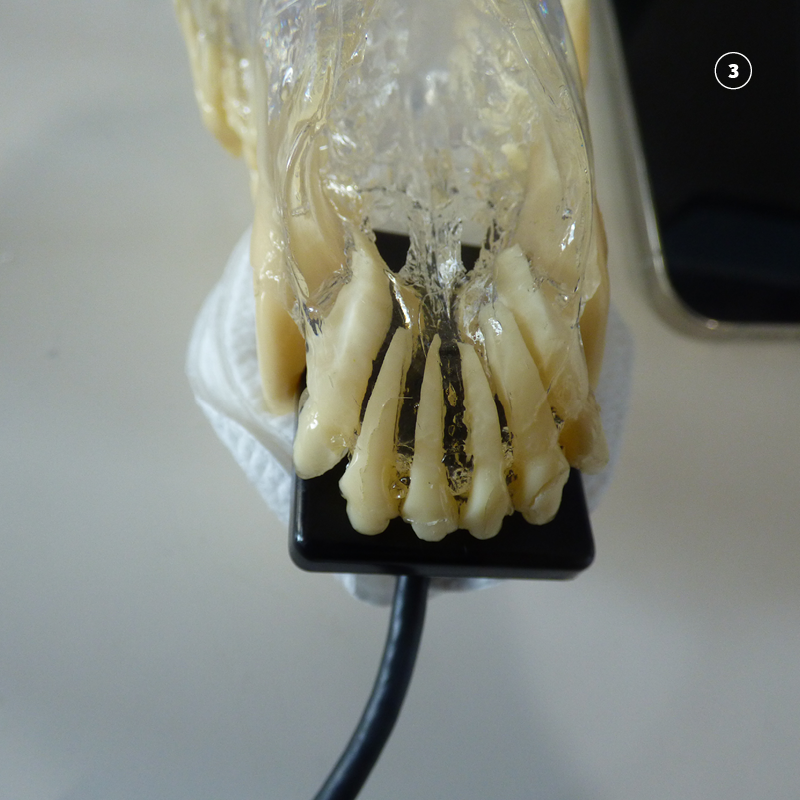
Make sure that the cusps of the crown are at the edge of the sensor so that it is far enough in the mouth to capture the apex of the third incisor (103) root.
Step Three. Position the tube head opposite the sensor so that the beam covers the sensor.
With the incisor teeth place the tube head opposite the sensor rostral. Look down the cone to make sure that the center of the cone is aligned with the sensor wire where it connects to the sensor. This will always align the beam to cover the sensor.
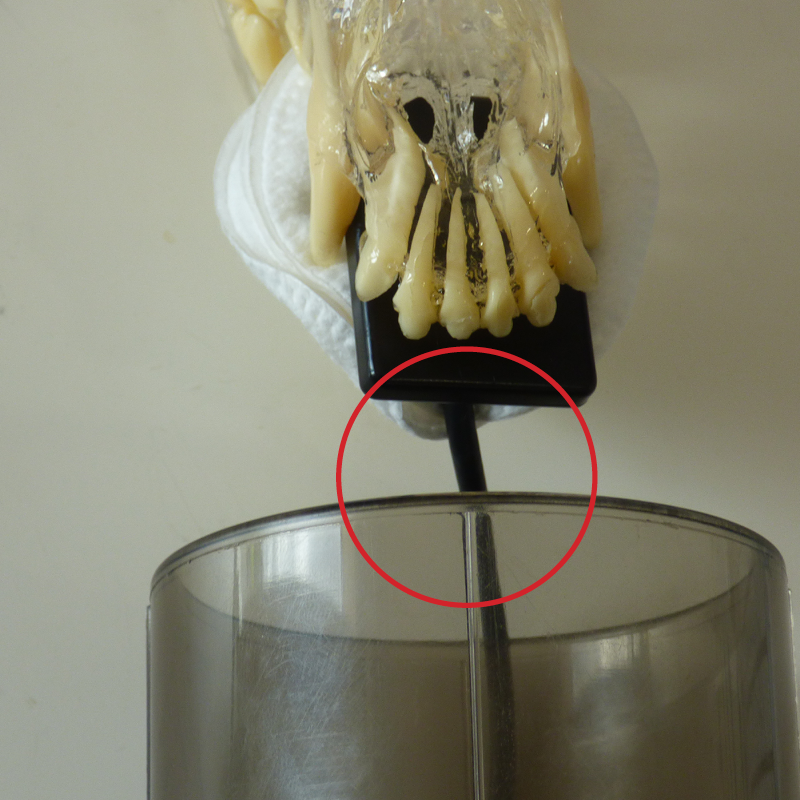
Step Four. Roll the tube head to the correct angle.
As the beam is already aligned with the sensor. Calculate the correct angle using the bisecting angle technique and roll the tube head up to the right position.
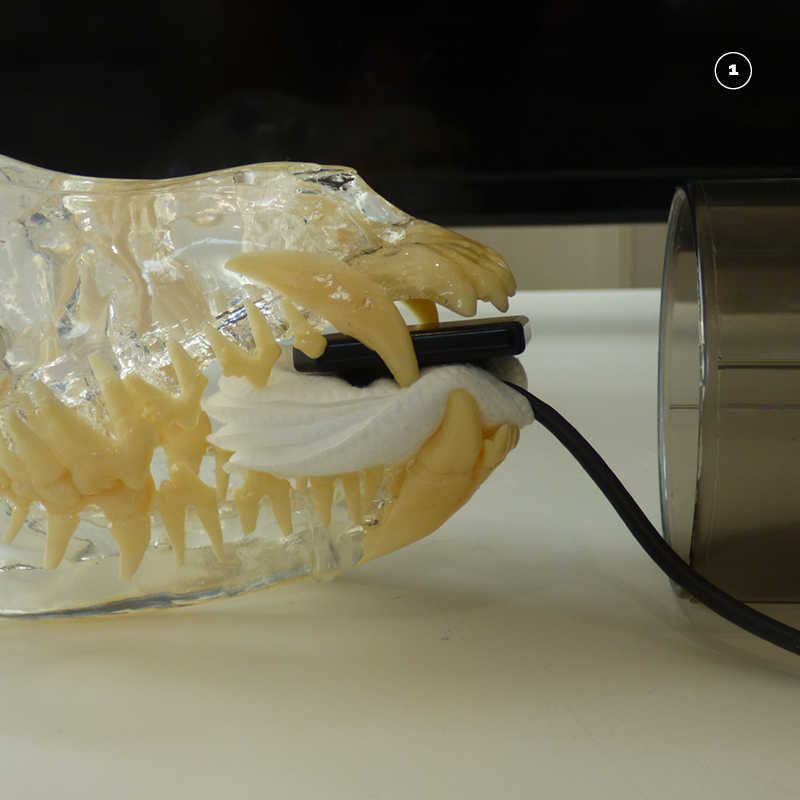
Visualise the patient from a lateral point of view.
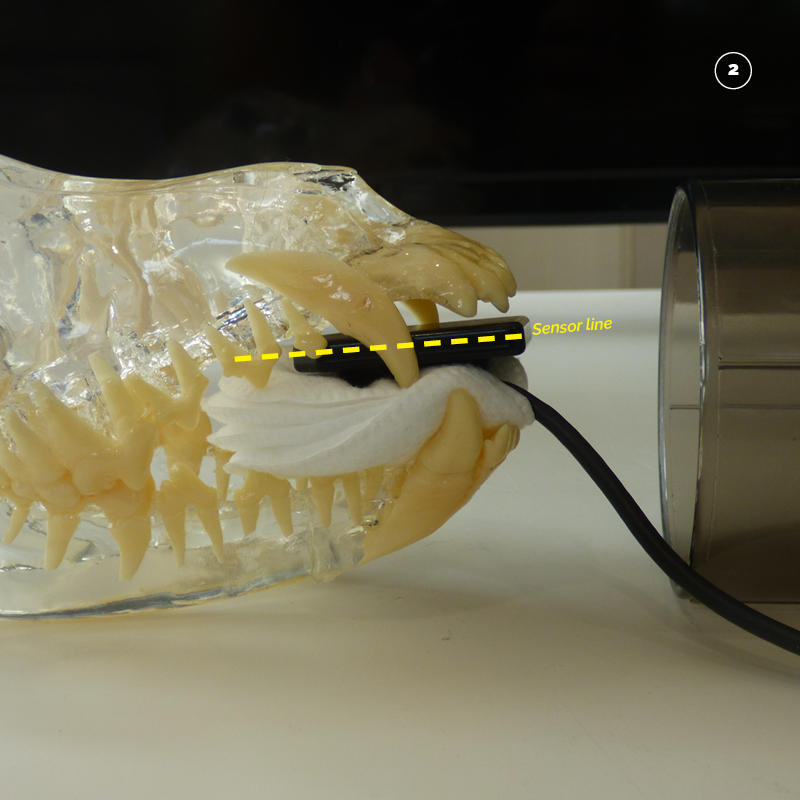
Imagine a line through the sensor.

Visualise adding line running through the centre of the subject teeth.
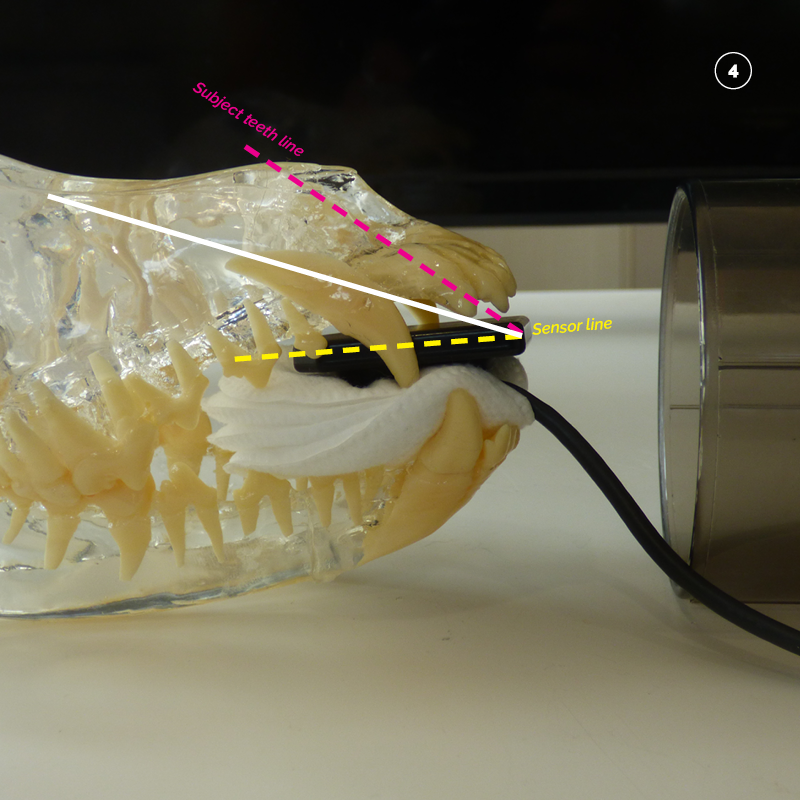
Visualise a third line that bisects (half’s) the angle. Pictured in white.
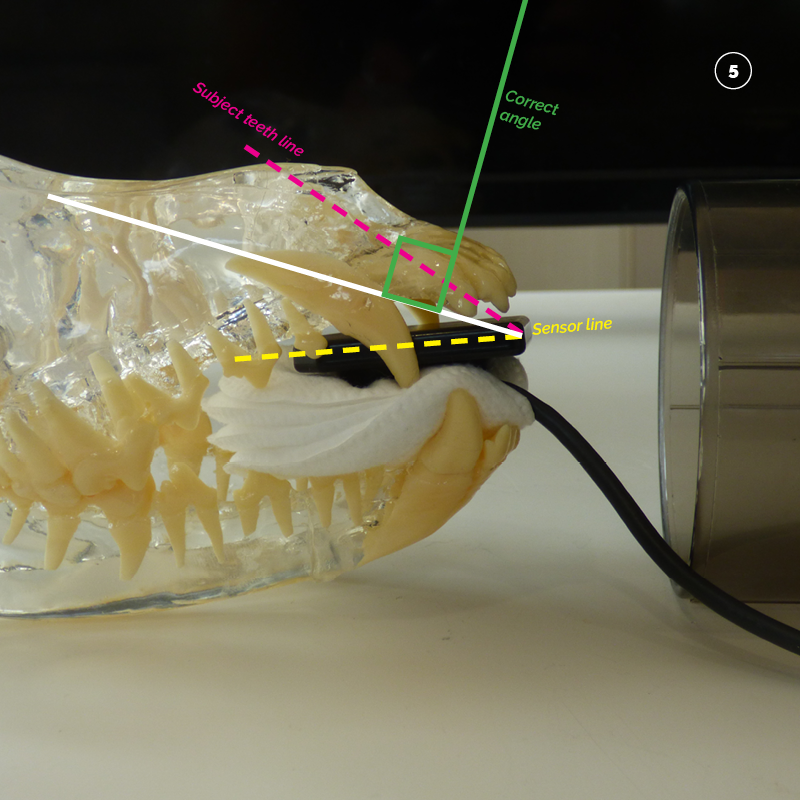
The correct angle will be perpendicular (90 degrees to) the white bisected angle. Pictured in green.
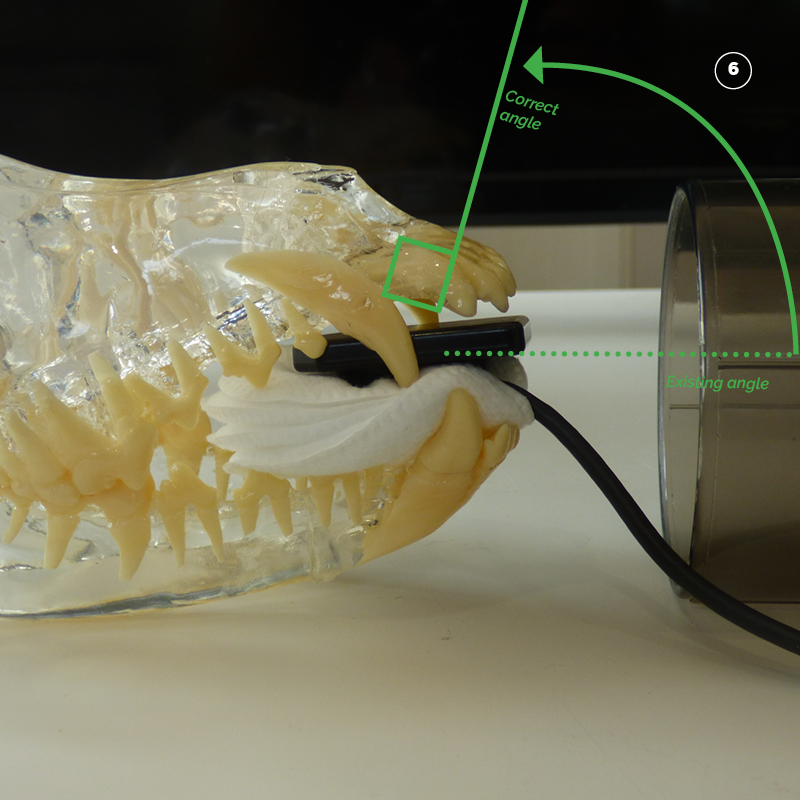
Roll the tube head up to the correct angle.
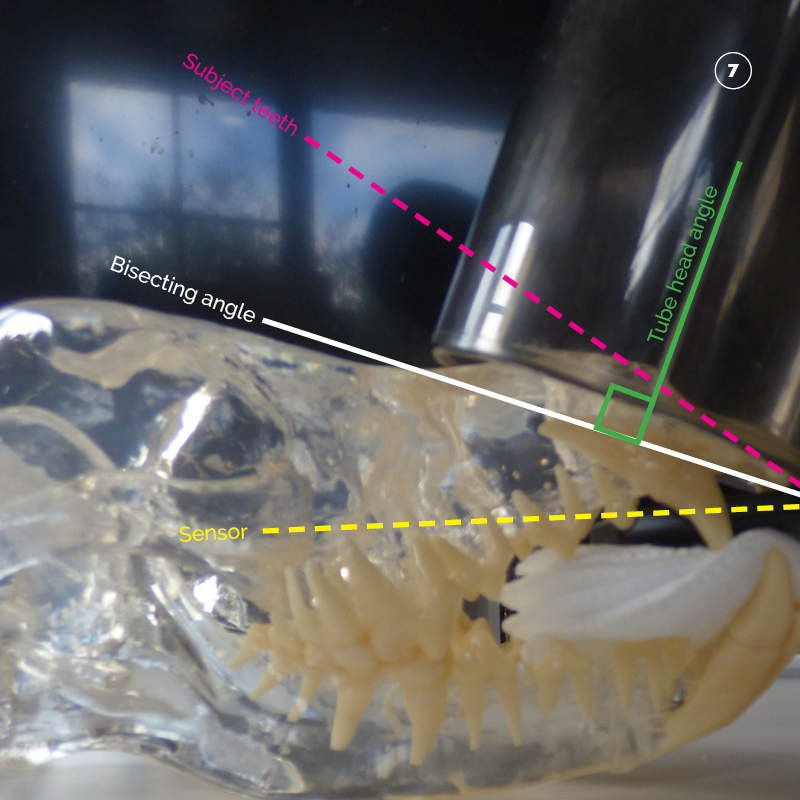
The tube head at the correct angle.
Step Five. Tube head orientation to patient mid-line.
The standard orientation for upper incisor teeth is along the mid-line. This is best for small and medium dogs and feline patients. In large dogs it may be necessary to split the incisors into two views of the left and right incisors. In this case the relationship to the mid-line changes slightly to the left for 101, 102, and 103 and slightly to the right for 201, 202 and 203. Offset by 10-20 degrees to capture the perfect image if splitting. If not remain along with the mid-line.
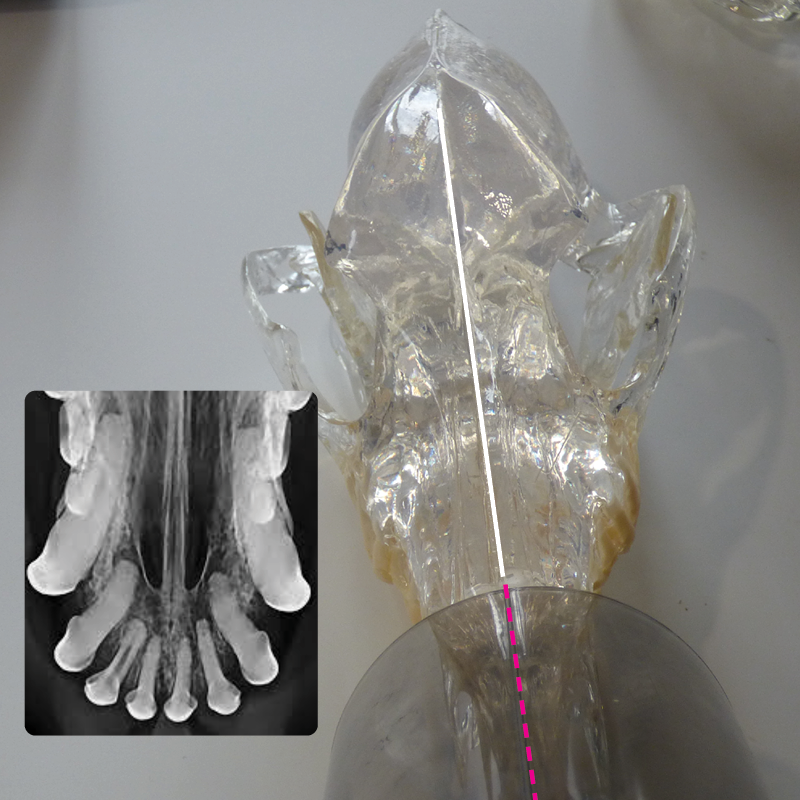
Standard alignment for small dogs when capturing all upper incisors 101, 102, 103, 201, 202 and 203.
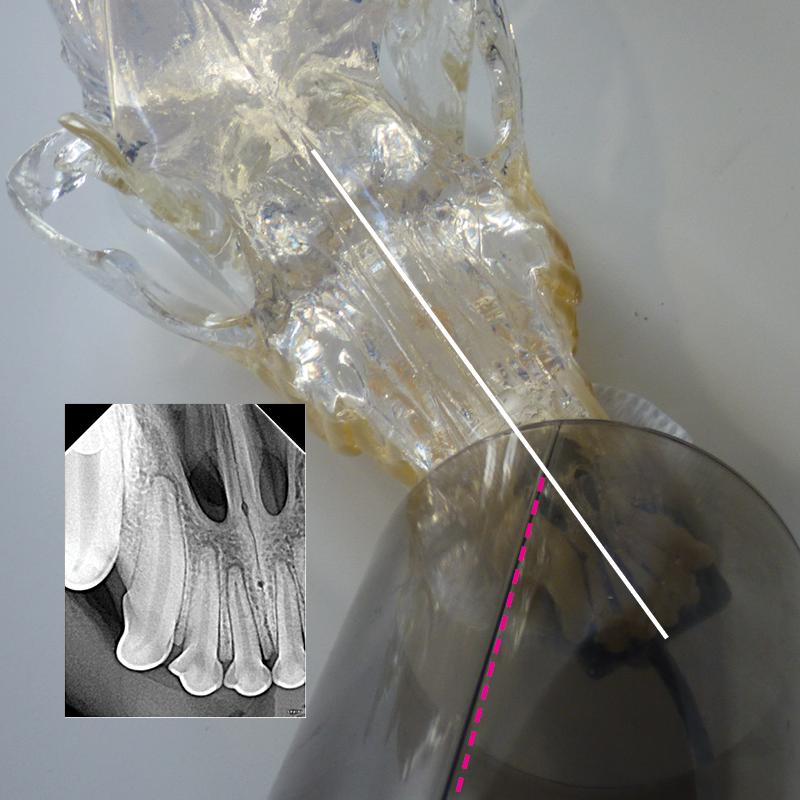
Standard alignment for 101, 102 and 103 in large dogs.
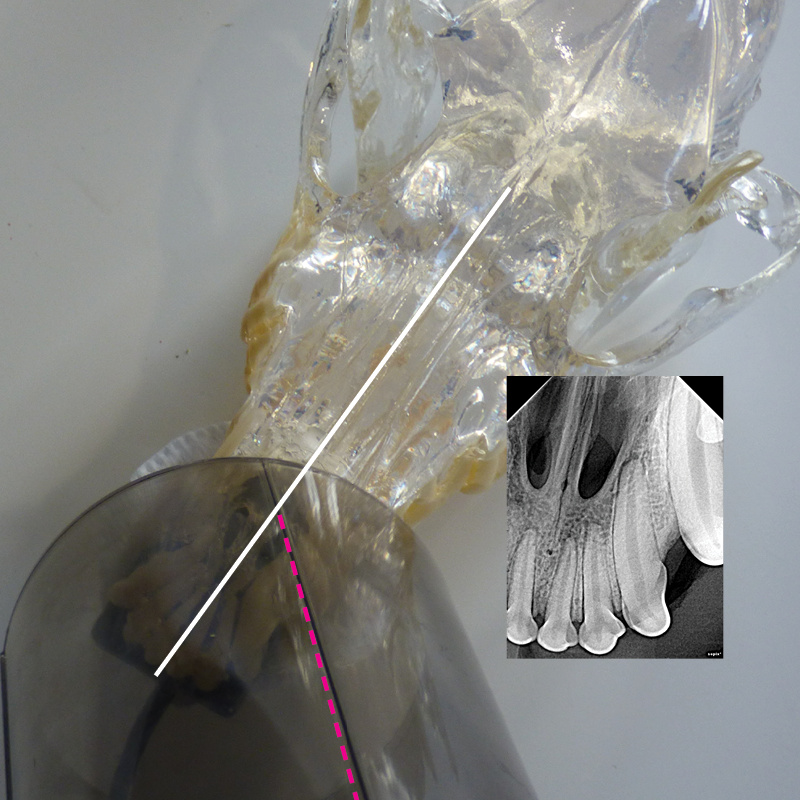
Standard alignment for 201, 202 and 203 in large dogs.
Step Six. Radiation factors
The standard factors with a digital sensor are as follows:
| Patient Size | Subject | KV | MAS |
| <=15 Kg | Maxillary Incisor Teeth | 60 | 0.100 |
| >15 Kg | Maxillary Incisor Teeth | 60 | 0.125 |
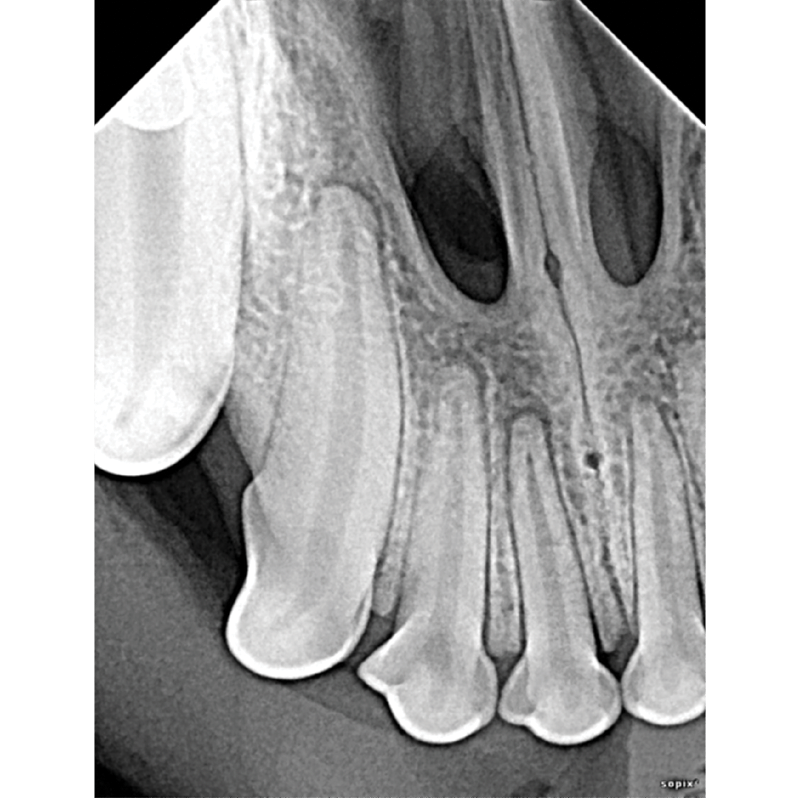
Large dog 101, 102 and 103.
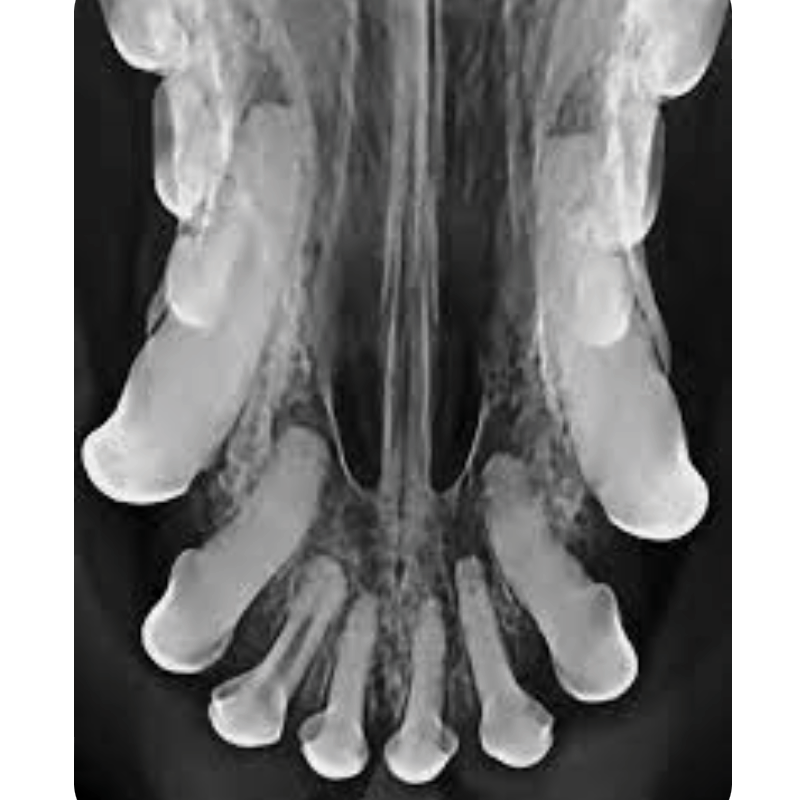
Small dog 101-3 and 201-3.
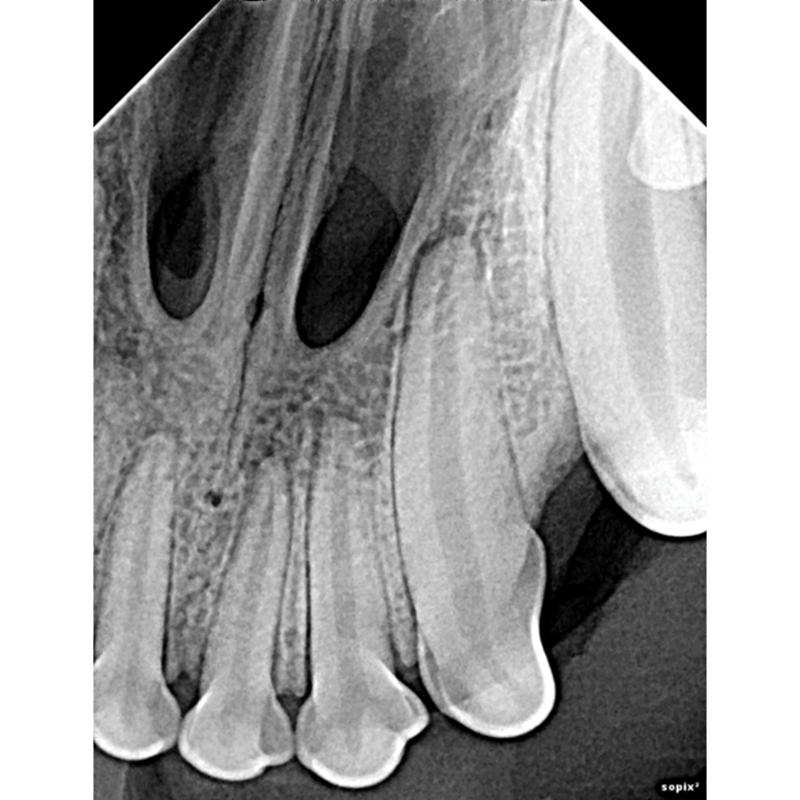
Large dog 201, 202 and 203.